George Philhower on Joyful Learning at Eastern Hancock
Key Points
-
Eastern Hancock Schools demonstrate the impact of prioritizing joy in the learning process, enhancing student engagement and curiosity.
-
By forging strong connections with local businesses and community partners, Eastern Hancock provides students with relevant real-world learning experiences.
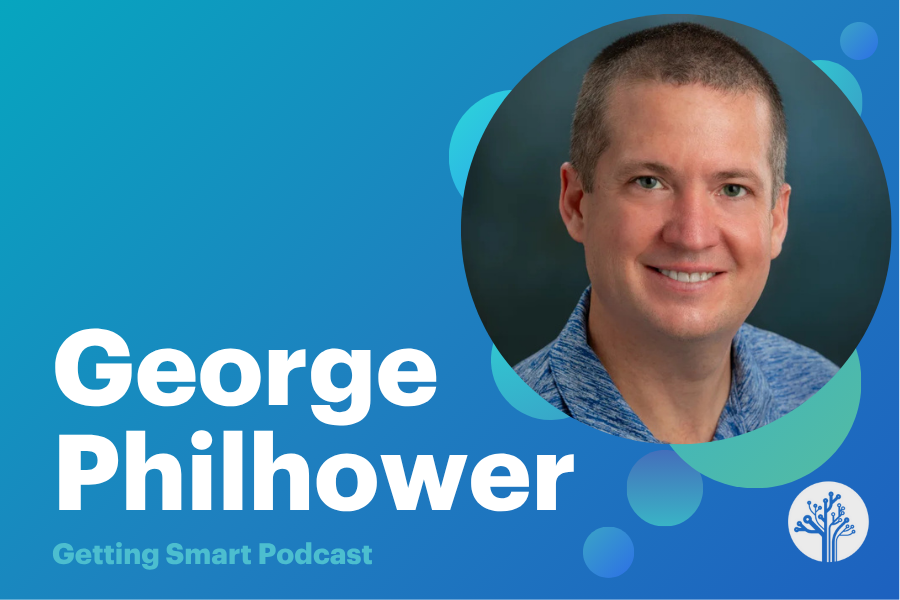
In this episode of the Getting Smart Podcast, Shawnee Caruthers has a vibrant conversation with Superintendent Dr. George Philhower to explore how joy, alongside connection, growth, and success, forms the core of their educational commitments. Learn about their innovative initiatives, like the Joy Integration Specialist role and Joy Jam conference, which transform learning experiences by fostering genuine curiosity and purpose. Join us to see how these efforts are not just enhancing academic engagement but also preparing students for real-world challenges with confidence and credentials. Whether you’re an educator, parent, or community leader, this episode offers valuable insights into creating a thriving, joyful learning environment. Tune in now and be inspired by a district daring to ask, “What if joy came first?”
Outline
- (00:00) Introduction to the Getting Smart Podcast
- (01:19) Joy as a Learning Goal
- (03:48) Creating Joyful Learning Experiences
- (05:40) The Role of the Joy Integration Specialist
- (10:41) Connecting with Students and Community Partners
- (22:07) Rethinking Credits and Learning Outcomes
- (28:32) Joy Jam: A Unique Professional Development Experience
Introduction to the Getting Smart Podcast
Shawnee Caruthers: You are listening to the Getting Smart Podcast. I’m Shawnee Caruthers. Today’s conversation is more than school. It’s about joy as a strategy in a moment where education is under pressure to prove its relevance. Eastern Hancock Schools in rural Indiana are flipping the script. They’re not chasing test scores; they’re chasing meaning. They’ve made joy not just a nice-to-have, but a promise—one of four guiding commitments alongside connection, growth, and success. And they’re not just talking about it. They’ve hired a full-time joy integration specialist, host an annual two-day Joy Jam with puppies, petting zoos, and personalized treats, and have turned their district into a living, breathing community of learning that honors curiosity, purpose, and possibility. Here’s the distinction: Joy isn’t the same as happiness. Happiness is fleeting; it’s conditional. Joy, on the other hand, is a foundation; it’s sustainable, it’s grounded, and it holds up even when things get hard. As past podcast guest and “Unearthing Joy” author Gholdy Muhammad said.
Shawnee Caruthers: I suggest making joy a learning goal.
Eastern Hancock took that suggestion seriously, and they’re building a system where joy is both the anchor and the launchpad. The impetus for today’s conversation is this: Joy matters because it creates space for real curiosity, and real curiosity opens the door to purpose. Eastern Hancock’s model isn’t just about engagement; it’s about helping students discover what they love, what they’re good at, and what the world needs by giving them constant, authentic exposure to real-world work and learning. In a district where every student meets one-on-one with the superintendent and principal, where passion projects spark hard conversations about what school could be, and where students earn credit through internships, agriculture, performance, and more, kids feel known. And when it’s time to walk across the stage at graduation, they’re not just leaving school; they’re entering the world with credentials, confidence, and a clear sense of what comes next: work, citizenship, contribution. Eastern Hancock is preparing them for all of it.
So we’re digging into how this rural Indiana district is doing school differently and what happens when a system dares to ask, “What if joy came first?” Today we’re joined by Superintendent Dr. George Philhower to talk more about creating cultures of joy within our school. Hey George.
George Philhower: Hey, Shawnee. Thank you so much. I think I need to hire you just to follow me around and say those good things about us all the time.
Shawnee Caruthers: Well, it is so easy because you all are such a likable district, and anyone who centers joy will always be friends of Getting Smart. We’re so glad to have you here today.
George Philhower: Thank you for the invitation.
Shawnee Caruthers: Absolutely. I mentioned the four promises that Eastern Hancock is centered around, and one of those pivotal ones is joy. What has been the most surprising outcome of centering joy so intentionally?
George Philhower: Yeah. So as you mentioned, we’ve got a strategic plan that guides all of our work and four promises that live within that strategic plan. And number one for us is joy. It’s just the idea that we want to be really intentional about creating a place that people look forward to coming to. What we’ve noticed is that the gravity of the world, the gravity of the work of education, if you just do nothing and watch the news, it doesn’t take long to realize that the gravity of that work isn’t pulling you to a place of joy. So if you’re gonna get there, it’s gotta be something that you intentionally do.
Creating Joyful Learning Experiences
George Philhower: What’s been fun is to watch what our staff do when you challenge them to figure out how to make learning fun. A great example of where joy comes to life in a classroom is our fifth graders teach about Paul Revere every year. Instead of kids just learning about that in their textbook, in the boring old way that maybe I remember, we find a person with a horse and bring them to campus, dress them up like Paul Revere, and have them ride past the classroom screaming, “The British are coming.”
What we’re learning is that emotion cements learning, that how kids feel while they’re learning is just as important as the stuff they’re learning. I drive just about the same way to work every day, and there are some days that I get home and I don’t remember the journey between school and home. I think that happens with our kids a lot too, that they do 180 days of school. So when they’re talking to their families at dinner and the families say, “Hey, what did you do at school today?” and they say, “I don’t know,” it’s because they don’t remember. But you know, if I’m driving home and a deer jumps out in front of my car, I’m gonna remember that part of my journey home. So we try to figure out how do we make deer jump out in front of kids while they’re learning as much as we possibly can so that they have those emotional experiences and those magical moments to anchor their learning to.
Shawnee Caruthers: That sounds all so fun. How do you, I know you said it helps the teachers really experience the joy of learning as well. How do you get them to really connect to that promise?
George Philhower: Yeah, so it doesn’t take very long to convince teachers that the job should be fun and the learning experience should be fun. The hard part is you’re asking somebody who has already a full plate to do one more thing.
The Role of the Joy Integration Specialist
George Philhower: So what we’ve done at Eastern Hancock is we’ve mobilized somebody in our district that we call our Joy Integration Specialist, and she’s amazing. Her name’s Stacy. If you email [email protected], she’s on the other end of that email. So what happens is if a teacher has a crazy idea, “I’ve always wanted to pull this off in my classroom. I just don’t have the bandwidth to get it done,” they email her, and she comes back with, “Here’s how we’re gonna do it,” and we try to figure out how to make it happen with the teacher taking the minimum lift possible because they’ve already got full plates. The other piece of what Stacy can do is, “Hey Stacy, I’m teaching about the American Revolution this year. I need 15 crazy ideas, and I might pick one or two of those that we’re gonna try to pull off.” She specializes in bringing joy to the space, and then often she comes up with ideas by herself. As you said, joy and happiness aren’t the same thing. Part of what she helps us think about is how do we build in school-wide moments of joy for kids? So an example is she had the idea that it’s probably true that some of our kids don’t get their birthdays celebrated like she would like to see happen. So it irritated her so much that she said, “We’re gonna do an everybody’s birthday day.” So we pick a day every year, and when kids come to school that day, we just pretend like it’s every single one of their birthdays. So 1,200 kids get a birthday present, 1,200 kids get a birthday cake, and then we usually do something kind of silly, like we’ll have a magician or somebody making balloon animals or something like that to celebrate kids’ birthdays.
Shawnee Caruthers: No, that’s so great. It sounds like having the Joy Integration Specialist has really shifted what teaching and learning looks like at Eastern Hancock, and truly this is the first time I’m hearing like an email address that’s [email protected]. I mean, that’s so amazing. It’s a different kind of role. So what made you bold enough to really create that role for your learners?
George Philhower: Yeah, so I was reading a book Will Guidara wrote, “Unreasonable Hospitality,” and it’s one that I’d recommend. They really think about how do you change the customer experience when they’re trying to enjoy a fancy meal that, yeah, the food’s wonderful, but what about the experience? So he has a position in his restaurant industry called a Dream Weaver, and I had a kindergarten teacher. I sent out a weekly email every week around our four promises, and I sent one around that book. The author was giving a speech, and he talked about Dream Weaver. I had a kindergarten teacher that said, “Hey, we need a Dream Weaver at Eastern Hancock.” So that’s where it came from, that a kindergarten teacher said, “If I had access to someone who could help me pull off some of these crazy things that I’m laying awake at night dreaming about, we could really make some special moments happen for kids.”
Shawnee Caruthers: Well, it’s not very often that the crazy ideas are pushed down, so that’s really, really great. I know another way that you all help to uplift joy is through your dog. We recently wrote about your dog in our Smart Update. How does having your dog or the emotional kind of support animal help the learners and the teachers in your district?
George Philhower: Yeah, Shawnee, I think we probably have the highest dog-to-student ratio in the state of Indiana. My dog is Rosie. Rosie is a licensed therapy dog. She comes to work with me every day, and she hangs out in the guidance office at the high school. She kind of just hangs out with kids. Promise number two for us is what we call connection. We define that as every person that comes into Eastern Hancock should feel known by name, strength, interest, future hopes, dreams, and needs. We’re trying to create an environment that feels like home for all of these kids and the grownups as well. When I go home and my dog’s there, it feels a little bit more like home. We’ve found that that’s the case for a lot of our kids as well, and some of our kids come from hard places. I don’t know how to explain it, but when the dog looks at them in different ways than what humans can, there’s no judgment and no fear that might be coming. It’s wonderful. It’s me, two kids, and a dog ride to work together every day, and usually, the dog gets the front seat.
Shawnee Caruthers: That only makes sense. Definitely earned the right to do that. Making Eastern Hancock feel like home has really helped you all to crack the code, making a real district feel really personal and powerful for your learners.
Shorts Content
Connecting with Students and Community Partners
Shawnee Caruthers: How do you maintain such tight student connection when you serve so many counties and multiple pathways?
George Philhower: I’ve only been here; this is my fourth year at Eastern Hancock. It was a really special place before I got here. A lot of what I’m doing is just trying to make sure I don’t do something to screw this good thing up. The way that we feel like you do that is by being really intentional about it. We call them our four promises, not our four priorities, because if I tell you I’m gonna make something a priority, I don’t feel too bad if I don’t make it happen. But if I promise you something, then it’s my job to deliver on that promise. We think really hard about what do we do to deliver on that promise. For us, we’re small. So 1,200 kids is not a lot of kids, K through 12. We graduate about 100 kids. That’s a real advantage. One of the ways that comes to life for us is that I’m able to meet individually with every single junior and senior every single year. Me and our high school principal call them all in each fall, and we ask them three questions: What’s your plan after high school? What are we doing right now that’s helping you prepare for that? That’s our check to see if they have good answers, then we know we’re on the right path. And then number three is, who’s the grownup that’s your go-to person around here? We want to make sure every one of our kids has an answer to that third question. Then we keep this huge spreadsheet. This is my fourth year, and we do juniors and seniors, which means I’ve got five classes of data that give me some trends on things like what we know, what our kids are interested in going to. For example, I know that 20 to 25% of my kids every single year are interested in something within the healthcare industry. That means I’ve got a job to figure out how to provide those kids a relevant education, and I probably should figure out how to get a healthcare program on my campus if that’s what 20 to 25% of my kids are interested in. Our small size helps us connect with each kid and each family, and it’s something that’s always been true at Eastern Hancock. It really is a special place.
Shawnee Caruthers: Even though it’s small, that doesn’t mean that you’re not busy. That connection you just talked about with the students and for you to be able to, and the principal to meet with them one-on-one is really rare. You talked about the questions you asked, but how has this really changed the trajectory for your learners?
George Philhower: Promise number four for us is success. That promise is just a reminder that our end goal is not to just produce a bunch of academically proficient kids. It’s to make sure that they’re ready and confident about, and excited about the Monday after graduation, whatever that next path is going to be. For a lot of our kids, that’s college. For a lot of our kids, that’s a career or a military service. But getting to know our kids well enough that we know what they’re interested in doing gives us an opportunity to help connect them with all of our community partners. We’ve got a strategy for community connection we call CAFE. It stands for Community and Family Engagement, where we have quarterly meetings in our community where we invite all of our community partners in and give them an update on what life is looking like at Eastern Hancock and what kind of progress we’re making in terms of our strategic plan and delivering on those four promises, and getting their feedback. They hear from students, and we’ve created this list of 140 community partners, and we only graduate 100 kids. Those connections with those community partners turn into another spreadsheet where our community partners are telling us ways that they’re interested in engaging with us. Whether they’re interested in hosting field trips for staff members or field trips for students, or coming in and helping out in classrooms. We’ve got about 25% of our kids that engage in work-based learning, which means they’re spending half of their school day getting high school, sometimes college credit, and earning a paycheck in a high-wage, high-demand job. If we have the spreadsheet of our kids and we have the spreadsheet of our employee partners, then we’ve just got two puzzle pieces that our job is to figure out how to put those two pieces together in the best way we can.
Shawnee Caruthers: What I loved when we visited Eastern Hancock, as you were talking about your industry partners, you really couldn’t tell the difference between the industry partner and the teachers because there was such alignment, and you could tell that those partners are really glued in, and they really see your learners as part of their talent pipeline. What makes those partnerships truly effective, and how are you really helping businesses to see your students not just as learners but as future colleagues?
George Philhower: We really need each other. There’s several reasons. One, there’s a lot of real reasons, like financial reasons, that they need our kids. There’s talent shortages everywhere, and I’ve got a bunch of talent sitting in the building behind me. It just feels silly to not figure out how to best work together to make sure we’re able to fill their needs with that. But also, there’s a challenge that we have at school. If those industry partners hold the keys to helping us unlock, and that’s relevance in our school world. People like me, I’ve been in school every day since I was five. I went to kindergarten all the way to grade 12 on a school schedule. I went to college, got a job working at a school, and I’ve been here ever since. I’ve never had a calendar outside of a school calendar, which means I know a lot about one industry, which is education. I know nothing about any of the other things. When I was a kid, if I asked my family or I asked my teacher, “Why do I need to know this during class?” I probably got in trouble when I went home because that felt disrespectful. However, our kids now are growing up with cell phones in their pockets. They’ve got access to YouTube and Netflix, and they don’t even have to tolerate an irrelevant television show. If we think they’re going to be willing to tolerate an educational experience that’s not relevant to what they’re doing, then we’ve got another thing coming. I think partnerships with our education partners and our community partners and other careers hold the keys to why do kids need to learn whatever they’re learning in chemistry or Algebra 2, or what’s the application beyond the classroom to all of those things? Those relationships have been amazing at Eastern Hancock.
Shawnee Caruthers: I’m sure you have so many success stories of what that looks like. Can you share maybe one that you’re just really proud of?
George Philhower: I think about a lot of our kids who found a connection at school with an employer, and they’re still there. I could give you several names of kids who weren’t so sure about their plan, and now they’re working in an industry where we watch them get their credentials paid for after they leave, and they’re climbing these career ladders after they leave. It’s just evidence that the more we blur the lines between what’s happening in school and what’s happening outside of school, we give kids better opportunities to find out what they’re excited about and where they see themselves. I think a lot of kids show up to school knowing that we’re probably not measuring the stuff that they’re very good at. Our kids are good at lots and lots of things, and our community partners help give us more ways for kids to show that they’re good at lots of stuff. There’s life-changing opportunities that our kids are getting. I’ve got five or six kids in my head who have jobs. An example is we had a Hitachi’s demo here earlier today, and we did a signing party for them, kind of like what you usually do with kids who sign to go play college sports, but they signed because they got jobs working for those places. There’s a gentleman named Chris Bruner who’s been a phenomenal community partner. The last thing Chris said to those kids is that his best hope is that in 35 years, those four kids get together again and they take another picture celebrating their retirement from Hitachi’s demo together. Having community partners that love on our kids and think about their success as much as we do is huge.
Shawnee Caruthers: Yeah, and at Eastern Hancock, that is really what stood out. A lot of people say, of course, college and career readiness are really important. You all really show that in your building. Yes, you have college things up with pennants, but you also have walls dedicated to industry and partners and students who are going straight to work. You do create space for all students to be seen and known and for their passions to shine through. Another way that you all do that is through your passion projects that typically happen about a week before spring break. They’re also used as a way for kids to show up and to reimagine what school could be and what it could look like. How have those projects opened the door to harder conversations about what needs to change in school, and what have you learned from giving students that kind of agency?
George Philhower: Transparently, I stole this idea from my friend Buddy Barry, who’s an incredible leader in Eminence, Kentucky. We do a passion project week each school year where teachers choose something outside of what they’re teaching to teach, and it can be anything. Sometimes teachers have siblings who are in law enforcement, so they teach a week-long class about law enforcement, fire and rescue, equine training, dog training, or anything like volunteering, and our kids’ choice into those activities. The week before spring break’s kind of a run-out-the-clock situation. Often, attendance is low for students, and attendance is low for staff because it’s kind of a run-out-the-clock situation. It’s often a high behavioral challenge time of the year as well. We don’t take grades on anything; kids know that. There’s no “Is this gonna be on the test?” type situation. But each year, that’s our highest percentage of attendance, and it’s our lowest incident for office referrals and those kinds of things, especially at the middle school, which is a challenging time. What that opportunity gives us is a chance to have fun conversations about why is this the case? We’re not grading anything. Nobody’s getting in trouble if they don’t turn in their homework that week. So what’s different about school? Yes, it’s hard work. You met a bunch of them, Shawnee, when you were on campus, but we’ve got the best people that work at Eastern Hancock, and it’s a lot of work to plan something different. But it gives us a week every year where we can stop the rhythm of the calcified structures of school, and we can just pause for a minute and say, “Why is this different? What could we do to maybe make school every day feel a little bit more like this?”
Shawnee Caruthers: Yeah, I really love that thinking. That’s just one example of how you all are shifting the narrative around what school could be.
Rethinking Credits and Learning Outcomes
Shawnee Caruthers: Another is just the way that you all are rethinking your credits is really the way that you’re starting to work credit for not just what happens in the classrooms but truly out in the real world, in which you’ve given so many great examples of. In those really high engagement experiences, like you give communication credit for acting in the play, or you give speech credit for those who participate in FFA because their public speaking is so prominent. What pushed you to rethink how credit is earned, and what have you learned about what truly counts as learning?
George Philhower: We’re at the infancy of those conversations, really, it feels like, and maybe we’ll always feel that way. Promise number three for us is growth. We want our kids learning new things that they will remember every single day. Obviously, we’re a school; that feels like it’s really important that our kids are learning. When you think about that idea that kids should be learning new things every day that they will remember, we know that the research is pretty clear that a lot of times at school, kids are learning about stuff they already know. We also remember taking that test at 2 o’clock on a Friday, and by 3:15, we forgot everything that was on that test. We really are thinking hard about identifying the things that are essential for kids to learn, and we’re calling those our key learning outcomes. We’re then trying to think really hard about what does success look like in each of those key learning outcomes, which then opens the door to when are these things just naturally happening all the time. What happens if a kid can show proficiency while they’re doing a 4-H project or while they’re doing something else that they’re doing that may not feel as much like school? How do we leverage our expert teachers in a way that feels more professionalized? They’re the experts at creating learning experiences and recognizing the learning that’s happening. For too long, we’ve kept them confined into their 25 by 25 room, and that limits their expertise. We’re really asking hard questions about what would look different if we just started thinking differently about how and when a student could show their proficiency. Again, we’re just getting started at this work and really excited to think about what the next steps might look like.
Shawnee Caruthers: Yeah, but sometimes it’s just those little small adjustments that truly make all the difference. Another example is just your vocabulary, your language around what you call different things, like titles. For example, you’ve moved from calling things elective to family choice classes. What was behind that shift, and how does changing that language start to change how students and families engage with these opportunities?
George Philhower: I think this one came, we’ve got a high school principal and a guidance department that’s incredible. I think this is language that they’re just starting to dabble with. As we think about the scheduling process and what kids might get to choose, empowering them as decision-makers in their own education is something that we’re thinking about. We also have a network of schools that we are working with that are all thinking about all of these forward-leaning things at the same time. Transparently, that might be one that we stole from a neighboring district, but I can’t remember exactly which one in order to give the sufficient credit. I like the idea, as a dad of a freshman and a fourth grader, I know. I like the idea of that feeling like a choice instead of like, I don’t know, we’ve used that word elective for a long time that it kind of means like you better choose one of these because they’re all required. A family choice class kind of feels more like I really do have a choice. We also try to figure out how do we soften all of our language. The stuff we were just talking about, that’s competency-based learning. But if I go into a staff meeting and I stand on the stage and say, “Hey guys, for the next 15 years, we’re gonna be talking about competency-based learning,” what’s going to happen is somebody is going to take out their laptop, Google it, get scared of what they find, and then like imposter syndrome and fear of all the things that we all are scared of as educators are going to creep in. So we talk about taking bite-sized steps and we use common sense language. Joy, connection, growth, and success are like you can’t really argue with those things that we’re gonna be moving towards. Being really intentional about identifying what do we want kids to for sure be able to learn before they move on to the next class is a more common sense. We try to really define specifically what are we talking about instead of using those buzzwords that can be confusing and scary sometimes.
Shawnee Caruthers: Yeah, and it allows for families to really enter into the conversation in a meaningful way. Have you been able to build greater connections with parents as a result of these language shifts?
George Philhower: We try really hard for sure. I hope so. I hope that as we’re using this, our first step is usually our staff because before we can make anything actually change, we’ve got to think about what are the beliefs driving the work. We’ve got to make sure that we’ve got a unionized or a united front on why we’re thinking about making the shifts that we’re making. That definitely streams into families and giving them language that they can access as they’re describing to each other at the ballpark is something that we probably don’t think enough about, but it’s definitely something that is extremely important.
Shawnee Caruthers: Yeah, absolutely. Now I’m gonna say something I’ve never said on a podcast. Circling back to the horse, you mentioned the horse and the elementary and Paul Revere. Then I remember you talking about it was the first time in your leadership career that you had asked the question, “What door does the horse go through?”
George Philhower: Yeah.
Shawnee Caruthers: That all circles back to, like you said, the joy and the learning, but specifically around Joy Jam.
Joy Jam: A Unique Professional Development Experience
Shawnee Caruthers: I’m so, I just want to dig into that because it’s a conference like truly no other. If you can talk a little bit about what that is because it’s part professional development and a whole lot of celebration and you really allow your teachers and for other people who come into the conference to really just relax and have a great time. What inspired you to launch Joy Jam, and how does it reflect the deeper work you’re doing to make professional learning something people actually want to be part of?
George Philhower: You know, where we all started with this conversation was that joy has to be intentional. It’s gotta be something that we’re thinking about as much as possible. One of the ways we try to spark that is to provide magical moments. Three years ago, this will be the third year, we decided that it would be pretty fun if we put on a conference every summer and invite people from all over the state. It’s kind of expanded to be all over the country now, where we focus on joy. The conference is called Joy Jam, July 15th and 16th. I think we’ve got about 40 spots left if anybody’s still wanting to sign up. It’s a free conference. If you go to our website, it looks like it’s gonna cost you $7,777 to join, but we give you a secret password that I don’t even have a way to take money on that site. When you sign up for Joy Jam, you also tell us what your favorite candy is and what your favorite snack is, and we buy that and make sure that it’s in the candy and snack room for you so that between sessions you can go and hang out in the candy and snack room. We try to think about all the things that might cause people to smile or make magical moments happen during the conference. We had a puppy room the first year. We’re actually on the market for some puppies. That was a conversation earlier today as we’re looking for some puppies for this year’s conference. We had a petting zoo last year. We had a couple of mini horses, and I did joke that it is the first time ever that I had to figure out which door should the horse come in. We’ve got some Highland cows, those little fluffy cows that everybody’s crazy about right now, are gonna be at Joy Jam this year. This year we’ve got a partnership with a Cincinnati Circus, and so you can come to Joy Jam and there’ll be some circus performers who can teach you how to juggle and make balloon animals. One of our keynotes is a middle school principal in Ohio who is a principal by day but also does circus acts and juggling. Her keynote’s gonna be all full of those kinds of things, and then she’s doing a breakout session to just talk about how do you integrate this kind of stuff into the day-to-day. We’ve got some other incredible speakers that are planning to be there. Joy, we think there’s levels of joy. We’ve talked about four promises, and joy is the first one on purpose because we think joy is the invitation, and our best hope is that if we can entice you with some magical moments, it’s gonna convince you to take a step closer to the work that we’re doing. If you do, you’re gonna find those other three promises, and that’s where the other, like the deeper levels of joy live through connection, growth, and the confidence that comes from success. Joy Jam’s an incredible experience. Stacy, [email protected], is the one that, she’s the magic behind that as well. We’d love to have anybody that wants to venture out to Charlottesville, Indiana for Joy Jam this summer.
Shawnee Caruthers: All right, and if you need a backup balloon animal maker, one of our favorite people, Victoria, can truly help you out.
George Philhower: She knows how to make balloon animals.
Shawnee Caruthers: It’s a secret talent.
George Philhower: Oh my goodness.
Shawnee Caruthers: But as we kind of finish up, you mentioned something that I just want to end with, which was the Monday after graduation for learners. What is your hope for your learners when they wake up that first Monday after graduation, and based on all that you all have poured into them, what is your hope for those learners?
George Philhower: My hope for all of them is they find something where they’re also finding those other four promises. Our best hope for kids is that those promises aren’t things that just live at Eastern Hancock. It’s stuff they find within themselves, that they find a path that gives them joy, they find connection, they’re challenged to grow, and they feel successful. For a lot of kids, whether that’s college, career, or whatever. I get a little bit irritated with the college or career because really it’s probably career no matter what. It’s going to be eventually some type of career, and the path is just different for the kid that’s going from high school to college to career versus maybe at the same time. If I had a crystal ball, I’d predict that those lines are gonna get more and more blurred over the next few years. But again, my best hope is that our kids discover those four promises that we believe are core to the work we’re doing at Eastern Hancock, that eventually they find those promises within themselves so that they carry with them for the rest of their life.
Shawnee Caruthers: Well, thank you, George, for so many magical moments that you have shared with us through this podcast today. I know people can’t really see me, but I’ve truly been smiling this whole time. That makes sense because we’re talking about joy and all the great things that you’re doing for learners and teachers out at Eastern Hancock. Thank you for joining us today, and we hope to see you at Joy Jam.
Guest Bio
George Philhower
Dr. George Philhower serves as the superintendent at EasternHancock Schools in Indiana. He holds a Bachelors in Elementary and Special Education from Cardinal Stritch University, a Masters in Instructional Leadership from the University of Indianapolis, and an Ed.S. and Ph.D. from Indiana State University. George envisions a time when all students and staff wake up excited to go to school each day. He understands this will only happen when they know they will feel safe and free to be themselves, they will get to feel successful, they will do meaningful work, they will get to play and learn with their friends, and they will be surrounded by adults who love them when they get there. George is convinced that the best way to make this vision a reality is through collaboration among leaders in the field of education who are committed to disrupting the status quo. George works hard to share the work happening in his district and learn from others in the field in order to make his vision a reality.
Links
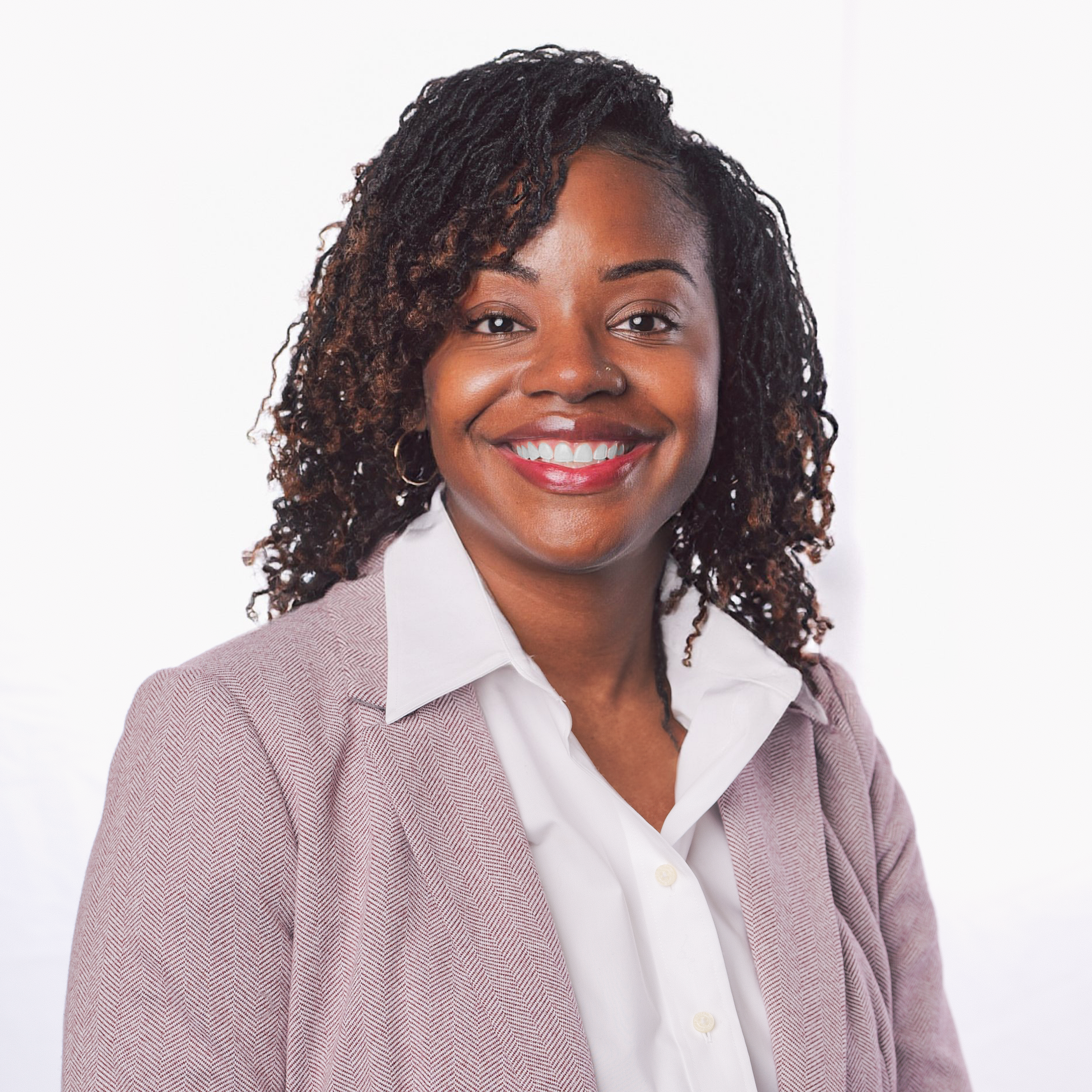


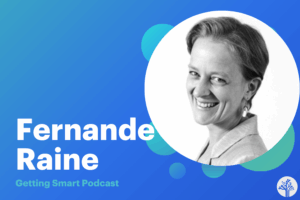
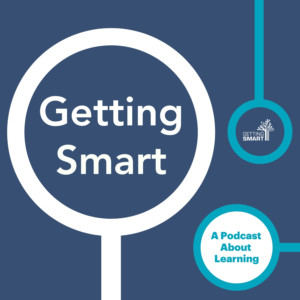

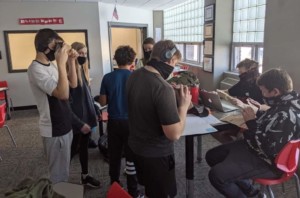
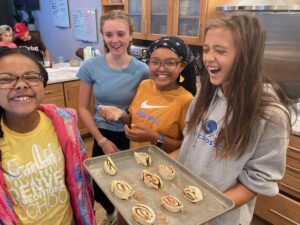
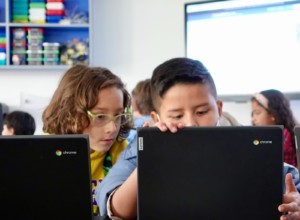
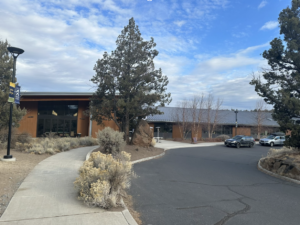
0 Comments
Leave a Comment
Your email address will not be published. All fields are required.